Crispy and addictive, papadums are an Indian snack that is also the perfect complement to any meal. They’re delicious when eaten alone, with chutneys, or with other dipping sauces. Learn how to make them from scratch at home.
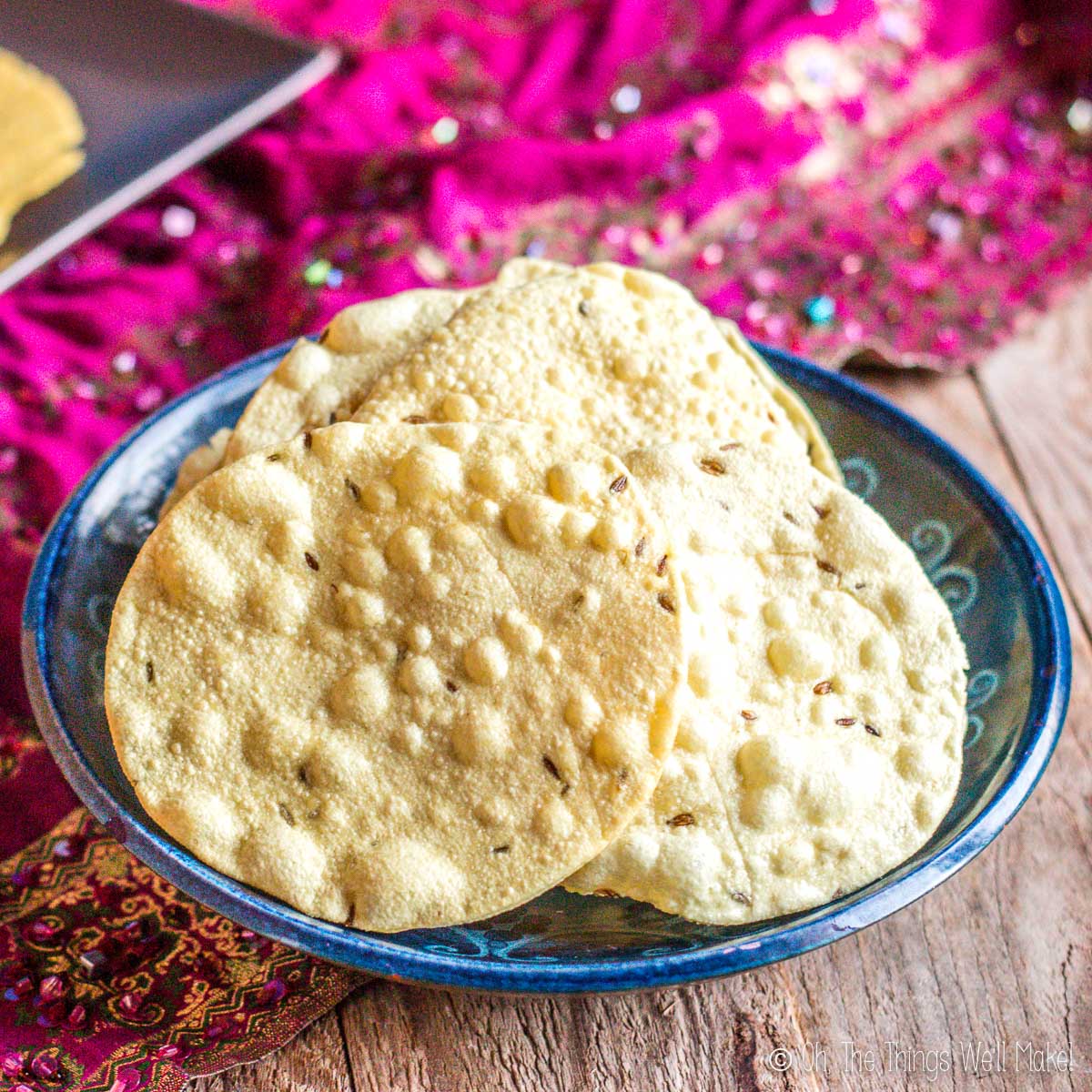
Years ago, I made papadums from scratch for the first time. When I say “from scratch,” I really mean it! I wasn’t able to find urad flour here in Spain (not even online!), so I had to get creative. It was something that I really wanted to do, though, so I kept at it and successfully made some delicious, crispy papadums!
What are papadums?
If you aren’t familiar with papadums, also known as poppadoms or papad, they’re a delicious, crispy, chip-like flatbread with origins in India. They’re generally made from urad flour (also sometimes referred to as black gram flour) and can be cooked in a number of ways. Some people prefer frying them, others cook them over an open flame, and yet others choose the microwave!
They may be served as a snack, an appetizer, or as a complement to a main dish, especially Indian food!
Ingredients
Papadums use only a few simple main ingredients. The most difficult to find is the urad flour which is also known as urid flour, urad dal flour, black gram flour, or black gram bean flour. This flour is made form grinding whole, peeled urad dal (vigna mungo). Urad dal is a type of legume that is also sometimes called a black lentil or black gram.
Apart from the flour, you’ll need some water, salt, and some oil for rolling out the dough more easily and also for frying the finished wafer.
Papad can be further flavored with a variety of different ingredients like garlic powder, onion powder, black pepper, cumin, or dried chili peppers. Some people add either baking powder or sodium bicarbonate to help them puff when cooked.
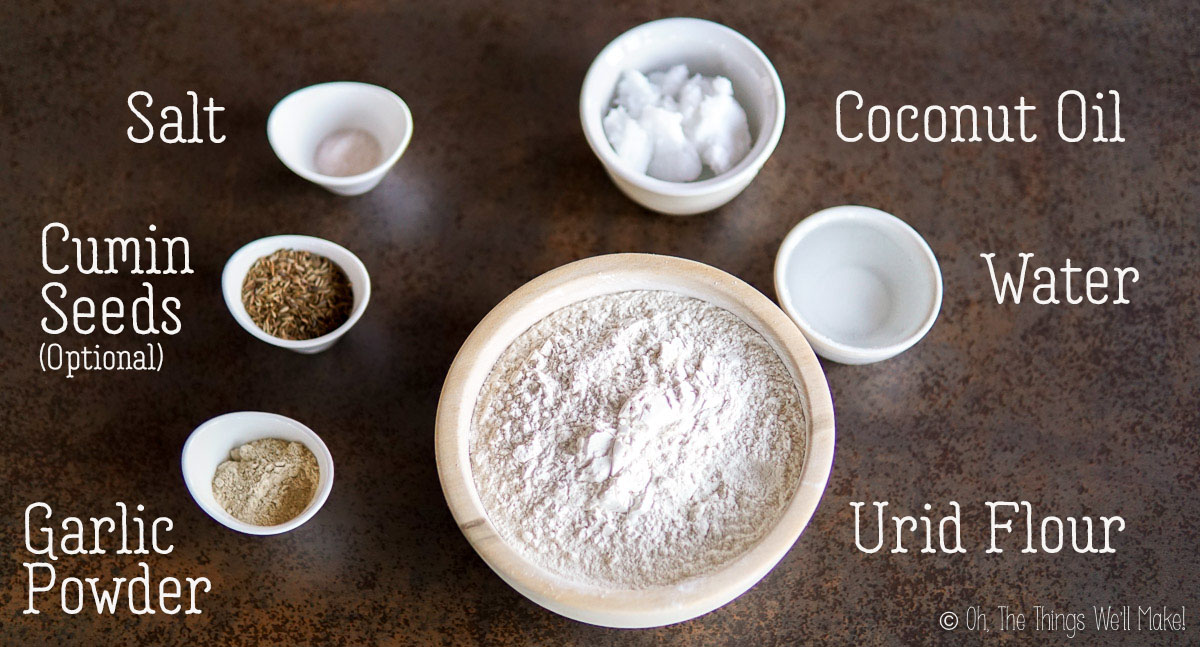
Making urid flour from scratch
As I said, I had been wanting to make papadums from scratch. Partly, it was out of curiosity, but also because they were quite hard to find (and expensive) here in Spain. After some research, I learned they were made from “urid flour” (aka. urad flour) but couldn’t find either urad flour or “urid lentils” anywhere here in Spain. I gave up on the idea for a while until….
One day, I went to a new fruit and vegetable shop run by a Pakistani family. At their shop, I found bags of urid “lentils” and papadums for sale (These very ones, actually). I ended up buying both.
Since I happen to have a grain mill, I decided I’d try making my own urid flour. For my first attempt, I used the whole urid bean. Unfortunately, the peel resulted in dark-colored papad with a thicker, different texture. The dough was a bit difficult to work with too.
While they were good, it wasn’t what I was hoping for.
Peeling the urad lentils (urid beans)
At a different store, I came across some peeled lentils for sale. I bought some to try making homemade papadums with those. I figured, “if the urad flour is normally made with “black lentils”, how different could they be?” Sadly, they were quite different. Again, lentil crackers were tasty, but they weren’t what I was trying to make.
I told a friend about my plans and she replied, “You know that you can peel your own lentils, right?“ (Light bulb moment!)
Not knowing what I was getting myself into, I bought more whole “black lentils” (urad beans) to give it a try. For some reason, I thought it would be easier to peel the whole ones than the split urid (urid dal), so I bought those. (If I were to ever do this again, I’d probably try the split ones!)
I soaked the beans overnight. While it’s true that you can easily rub the skins right off, you basically have to do it one by one. As you can imagine, it’s very time-consuming.
Determined to come up with a better way, I smashed the urids just enough to split them. This separated many of them from their skins. I hoped that the skins would float and I’d be able to rinse them off.
The skins didn’t float as well as I hoped. I put the smashed urids in a jar of water, shook them to help separate them from their skins, and then poured off the water and skins. The beans themselves (now “white lentils” without their skins) were kept inside by the lip of the jar when pouring. I repeated the process several times and eventually ended up with a couple of cups of peeled urid, ready for drying and grinding into urid flour.
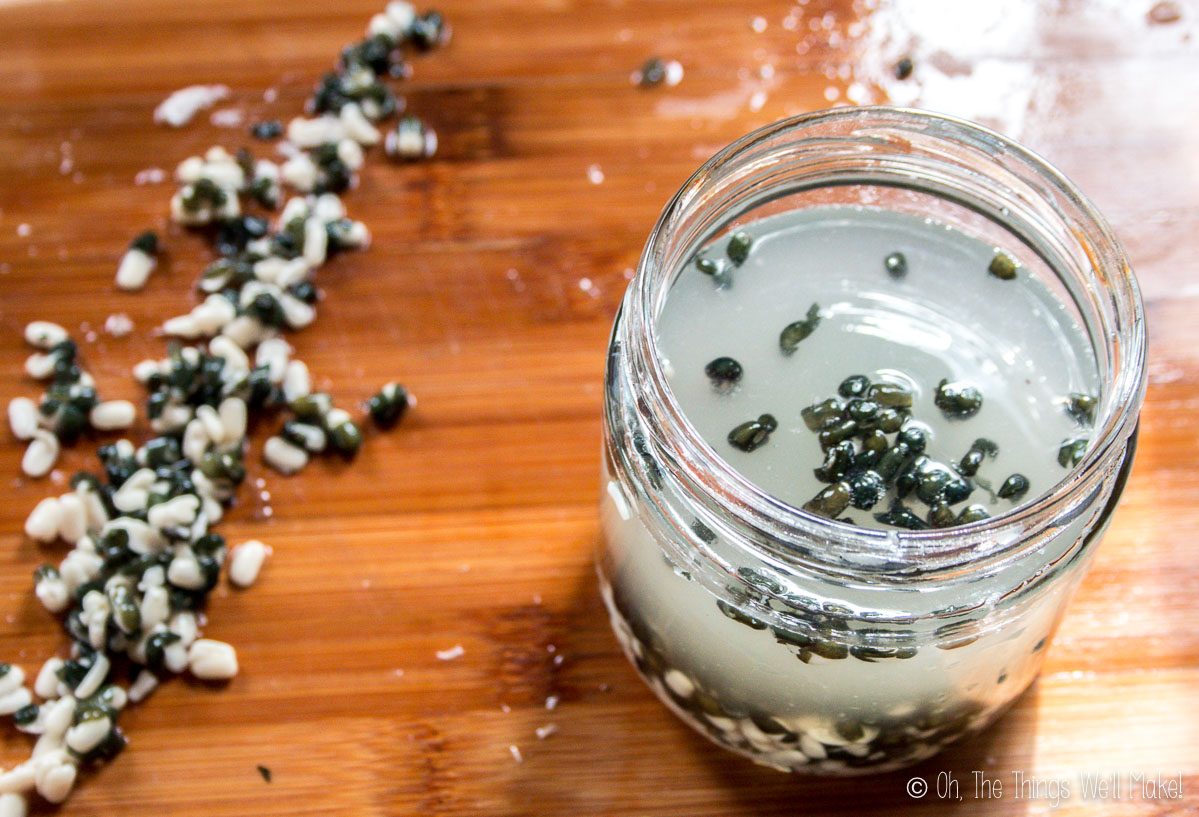
I lightly roasted the peeled urad on the lowest heat setting in my oven. When fully dried, I ground them into urad flour.
If you can find urid flour, or even just peeled urids, though, do yourself a huge favor and use those!
Making papadums
Once you have the urad flour, these are actually quite simple to make!
Make the dough
Mix together the flour and salt. If you like, you can also add some garlic powder or another fine powdered spice. Once the dried ingredients are well mixed, start adding water, little by little. You want to end up with a stiff dough. Add just enough water to be able to form the dough into a relatively hard ball.
Knead and pound on the dough for several minutes. If you think you added too much water and your dough is too sticky, you can knead it over a sprinkling of urid flour at first. If not, use oil instead for greasing both your hands and the working surface. (I’ve used both olive oil and coconut oil with success!) At first, the dough will be slightly sticky, but as you knead and pound on it, it will start to come together.
Forming the papadums
Divide the dough in half to make it more workable. Then, roll the dough into a thin layer around 2mm thick. Cut the dough into medium-large sized circles with a knife or circular cookie cutter. Continue rolling out all of the dough until it has all been cut into thin circular disks.
While it is possible to roll each disk into a thinner one immediately, I find that it’s much easier to do so after allowing the dough disks to rest and chill for several hours in the refrigerator.
Ideally, you want to roll the disks to be as thin as possible. This will allow them to cook quickly and evenly and get the perfect crispy texture when cooked! To make them as thin as possible, work over an oiled surface, rolling them out with a rolling pin. (See the video if you’re having problems.)
You may notice in the photos that I added cumin seeds directly to the dough the first time I made these. While it’s possible to do it that way, I find it easier to roll out the dough without them. The seeds can be more evenly added to thinner papadums if added later instead. (See that Variations section below.)
Drying the wafers
While I was told that they could be cooked immediately, I’ve tried both ways and prefer using dried papadums instead. As they dry, they get even thinner, and when the thin disks are cooked, they cook more quickly and evenly, resulting in a perfectly crispy snack!
Plus, once the uncooked papadums are dried, they can be stored away for future use! As long as they are completely dry (to the point of being hard and brittle), they can be stored in a well-sealed, cool, dry place for quite some time. (Probably months, as long as they are thoroughly dried!)
Once they’ve been rolled as thinly as possible, allow them to air dry over a sheet of parchment paper. To speed up the process, you can also dry them in the sun (or in the oven at the lowest heat setting).
At first, I tried drying them over a grill-like drying rack, but I didn’t like the indentations the bars made on them. So, instead, I found it was easy enough to dry them on parchment paper, occasionally flipping them so that both sides of the papadum would dry.
Cooking the papadums
To prepare your homemade papadums, you can broil them in the oven, puff them in the microwave or deep fry them.
I have tried all three methods, but my favorite was method is to either deep-fry them or to pan-fry them in an oil-coated skillet on the stove. The deep-fried papadums crisped up instantly in the hot oil, becoming light and crispy. While I normally use either olive oil or coconut oil, you can use other types of vegetable oil (such as sunflower oil or peanut oil).
The broiled and microwaved ones also crisped up quickly, but they weren’t as light and flaky as the deep-fried ones.
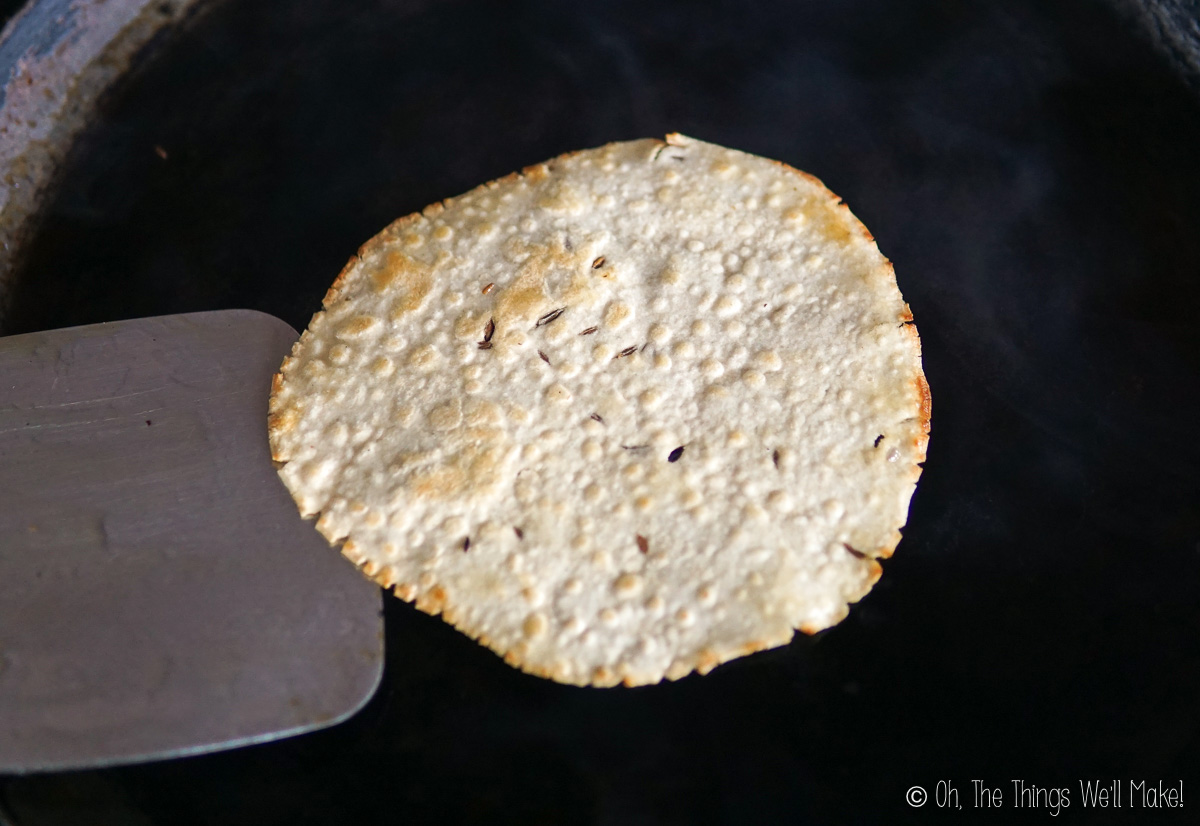
Serving suggestions
Papadums can be eaten on their own as a snack. They make a great side to curries and other main dishes. Just like tortilla chips, they can be served with dips or salsas.
Variations
While most papadums are made with urid flour, you can try making papadums with other flours, especially other legume flours. While they won’t taste or look exactly the same, you can make tasty cracker-like snacks in the same way.
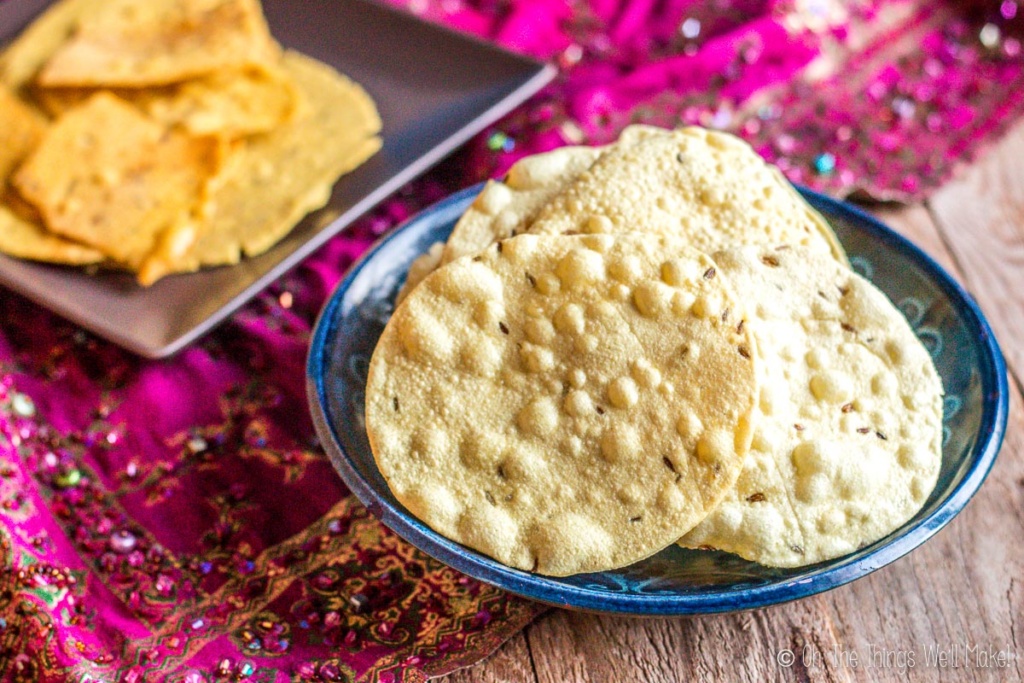
I’ve tried making these with both regular, peeled lentils, and also with mung beans. While my favorite papadums were made with the urad flour, the others were also quite good. I found the urad flour the easiest to work with, allowing me to make very thin wafers. The mung beans made slightly darker colored wafers that were also slightly thicker. They cracked on the edges when I tried to make them thinner.
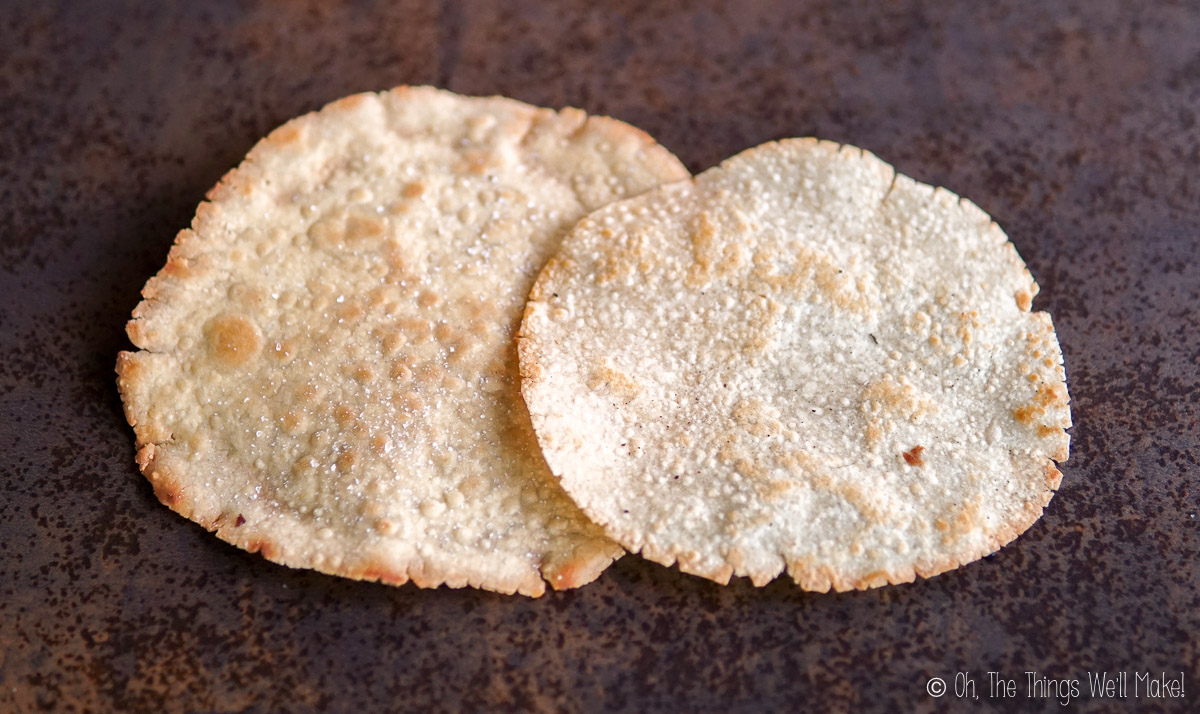
I’ve also seen people using chickpea flour or combining the legume flours with wheat flour.
Adding spices
Papadums are often sold with cumin seeds or cracked pepper within the papadums themselves. When I first made these, I tried adding some cumin seeds directly to the dough, but I found that it made it very difficult to roll the dough into thin sheets.
To add cumin seeds, dried chili, or cracked black pepper, try sprinkling them onto the thin disks of dough before drying them. Use a rolling pin to press the seeds into the dough. Then, flip the disks and use the rolling pin one last time to press them from the other side.
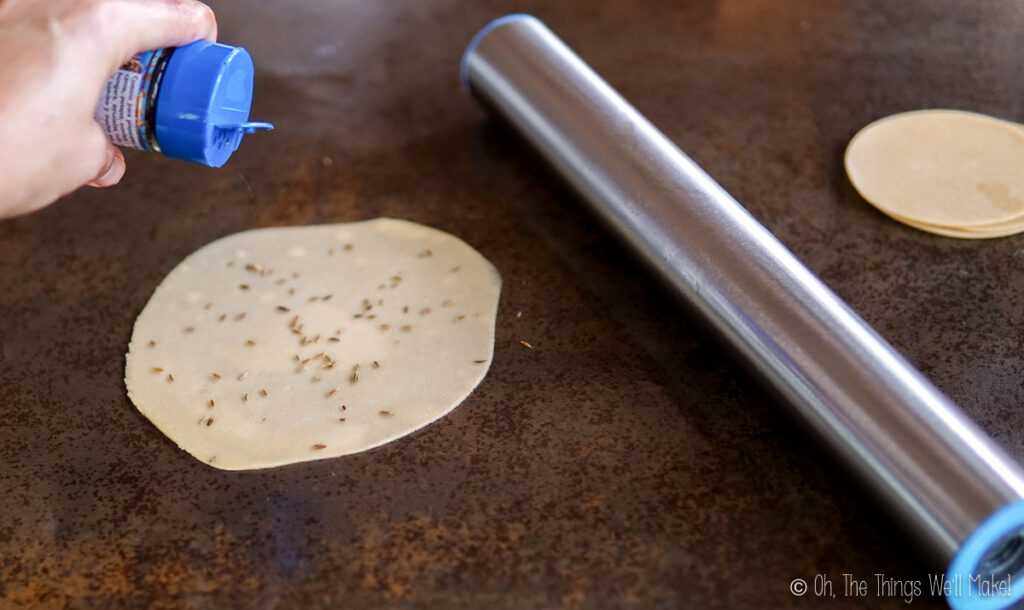
Allow the disks to dry and then cook them just as you would the unflavored papadums.
If you’d like to add garlic or other similar flavorings such as powdered spices, use them finely powdered and incorporate them directly into the dough. Powdered garlic makes a great addition to all of the papadums.
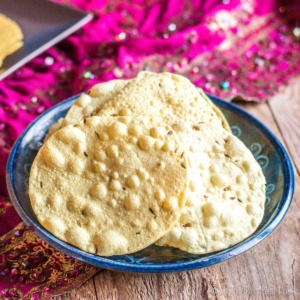
Homemade Papadums From Scratch
Ingredients
- 2 cups urid flour
- 1/4 cup water
- 3/4 tsp. salt
- garlic powder optional, to taste
- 1 tsp. whole cumin optional, for flavored varieties
- coconut oil or olive oil (for kneading and possibly deep frying)
- freshly ground black pepper to taste
Instructions
Making the papadums
- Mix together the flour, salt, optional powdered spices, and water until the ingredients just come together. Add the water little by little while mixing together, until you end up with a stiff dough. Feel free to adjust the salt and spices to taste. (Garlic powder and pepper are optional additions.)
- Knead and pound on the dough for several minutes. At first the dough will be sticky, but as you knead and pound on it, it will start to come together. You can grease your hands and counter to help keep everything from sticking. I've used both coconut oil and olive oil and both work well. (Any vegetable oil shoud work.)
- Take sections of the dough and roll them out on the countertop thinly, around 2mm thin. Use a round cookie cutter to cut out circular-shaped papadums and then use a rolling pin to roll the disks out it even thinner.
- Optionally sprinkle whole cumin seeds or other spices over the disks and use a rolling pin to gently press them into the papadums.
- Spread the poppadum disks over parchment paper to allow them to dry. Flip the disks ocassionally throughout the drying process. (You can speed up the process by drying them in the sun, a dehydrator, or an oven at its lowest temperature.)
- Dried papadums can be stored in an airtight container for later, or cooked for immediate serving.
Cooking the papadums
- Papadums can be broiled in the oven, puffed in the microwave, or deep-fried. My favorite method is to deep fry or pan fry the papadums in a small amount of oil. Papadums made in this way crisp up instantly in the hot oil. Broiled and microwaved papadums also crisp up quickly but aren't as light and flaky as the deep-fried ones.
Notes
Making urid flour from scratch
Papadums are most easily made if you can obtain urid flour. If you have a flour mill, though, or a high potency food processor, you can grind your own flour from the legumes. For best results, use peeled urad dal. If you can only find the unpeeled legumes, you can soak them and peel them too, but it’s a time-intensive job.Serving suggestions
Papadums can be eaten on their own as a snack. They make a great side to curries and other main dishes. Just like tortilla chips, they can be served with dips or salsas.Variations
While most papadums are made with urid flour, you can try making papadums with other flours, especially other legume flours. While they won’t taste or look exactly the same, you can make tasty cracker-like snacks in the same way.- lentils
- chickpeas
- mung beans
This post was originally published on April 24, 2015. It was updated adding new photos, clearer instructions, and new tips.
 Español
Español
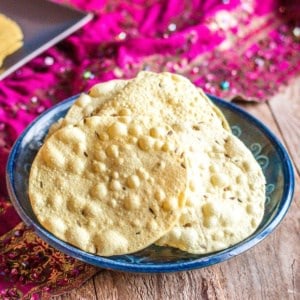
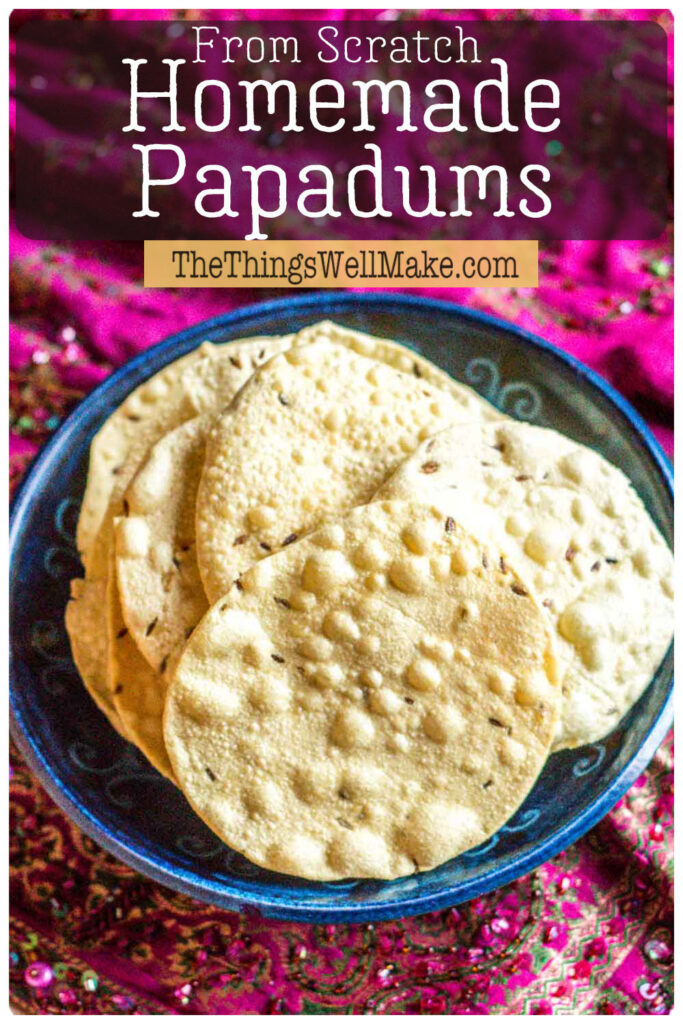
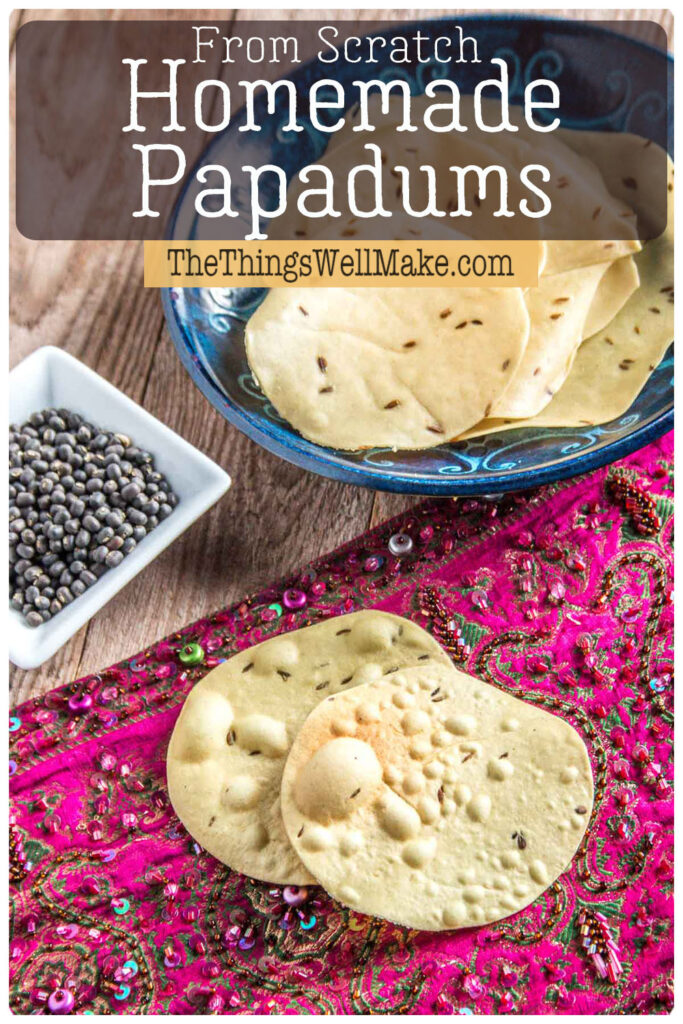

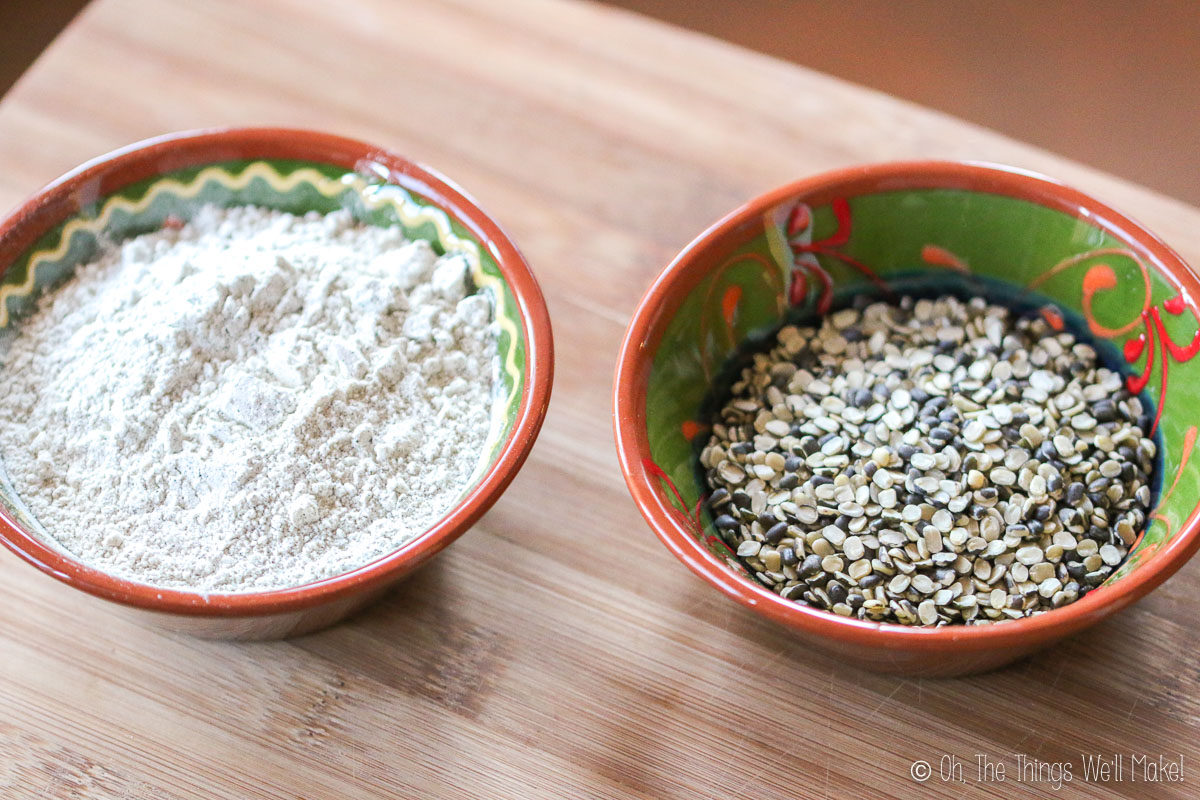
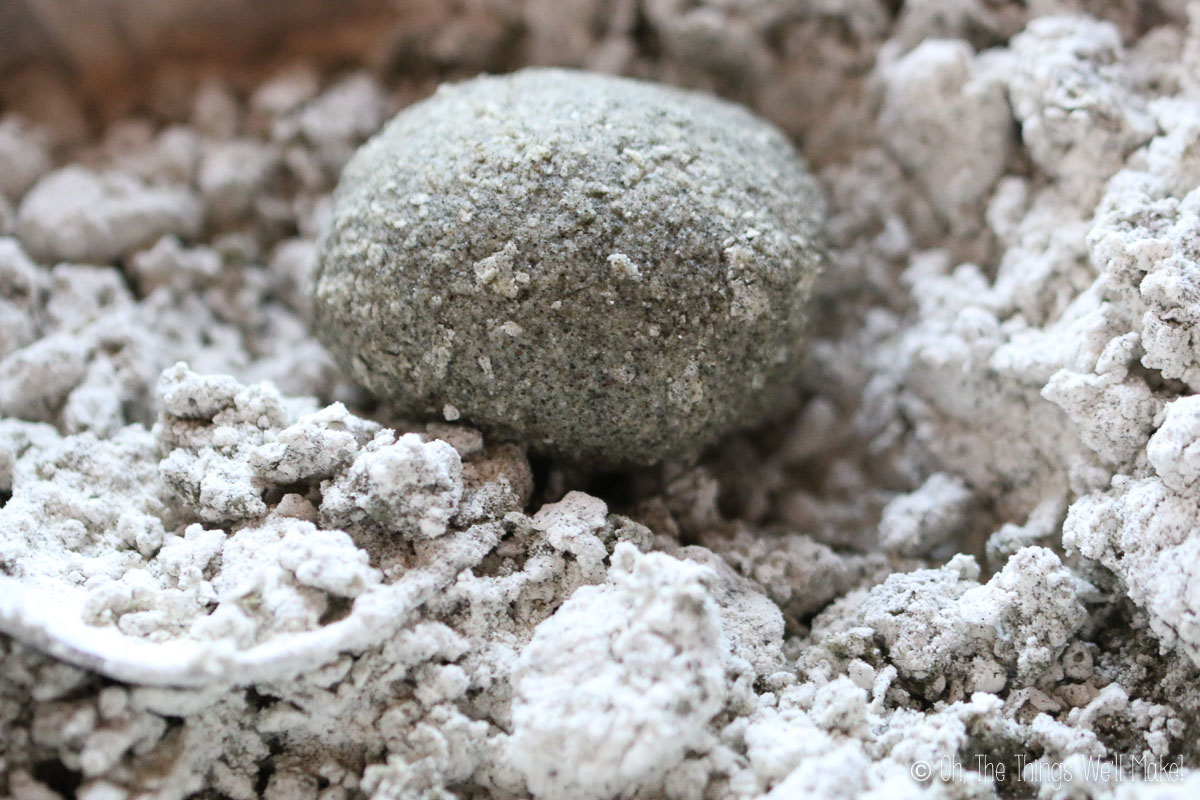
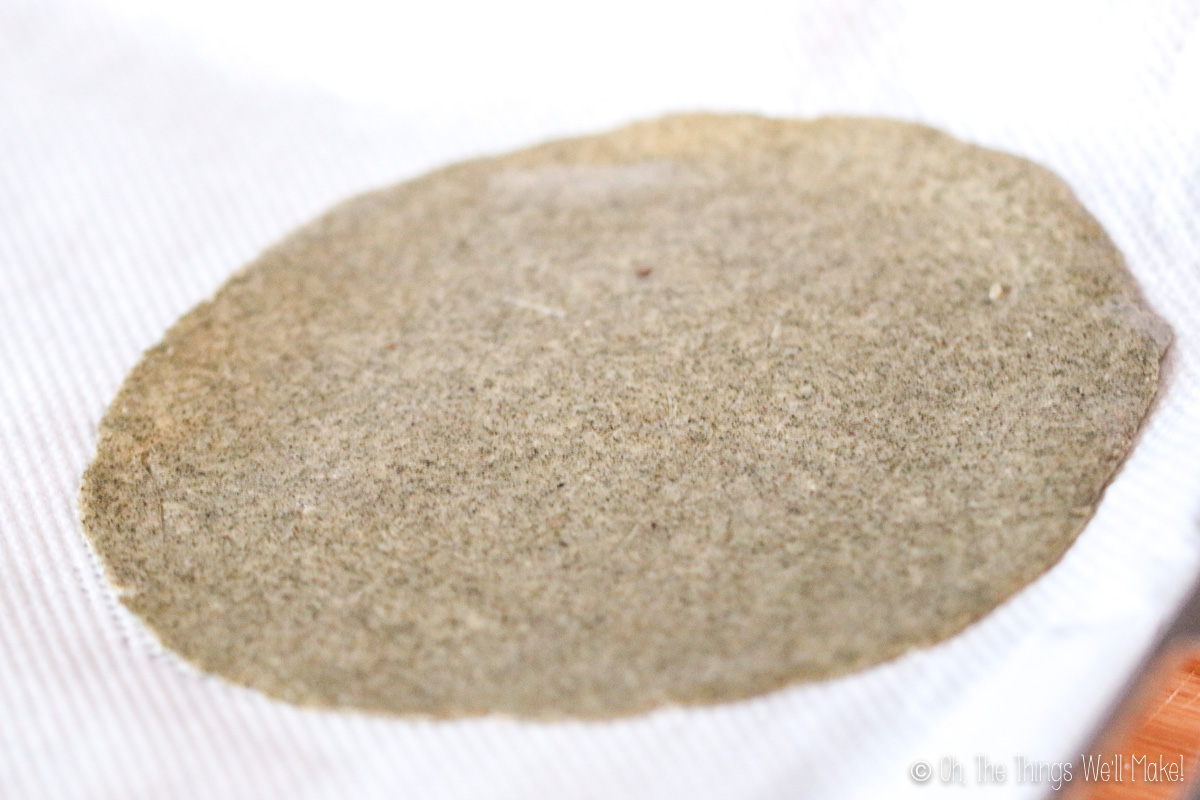
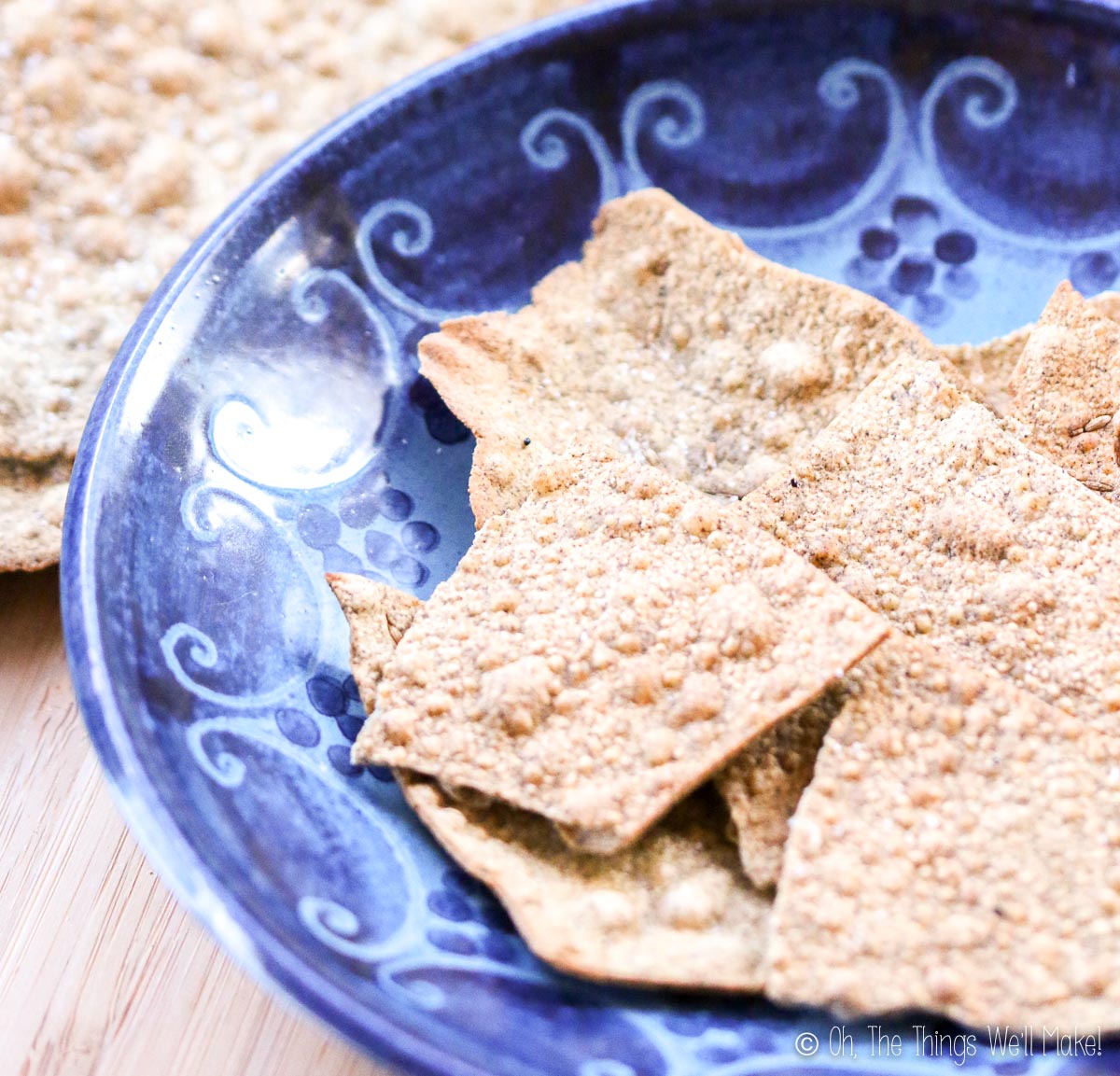
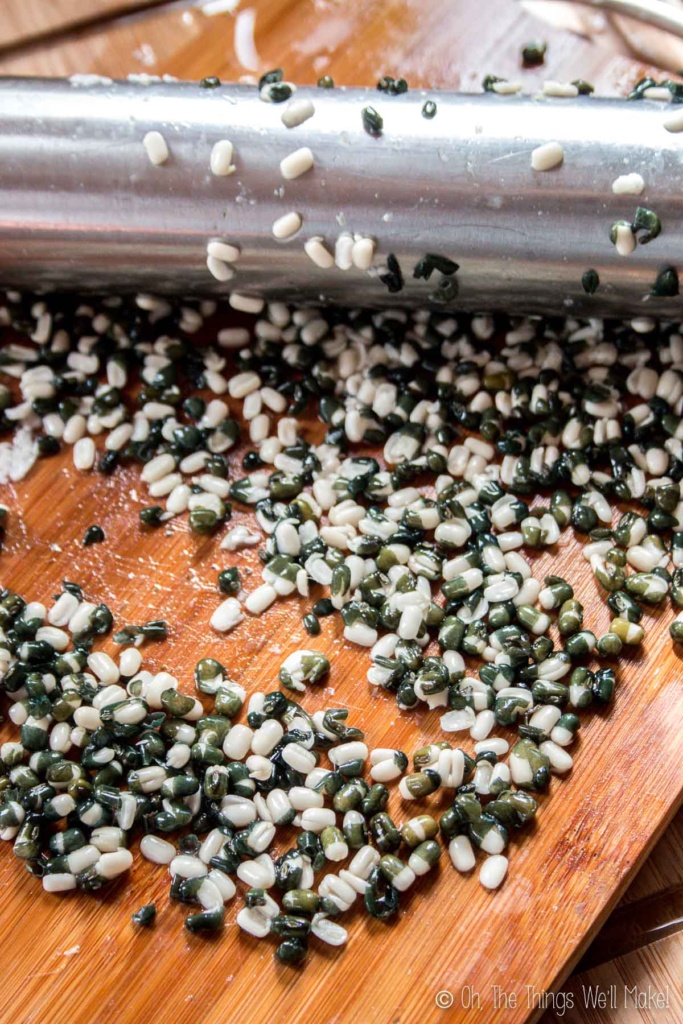
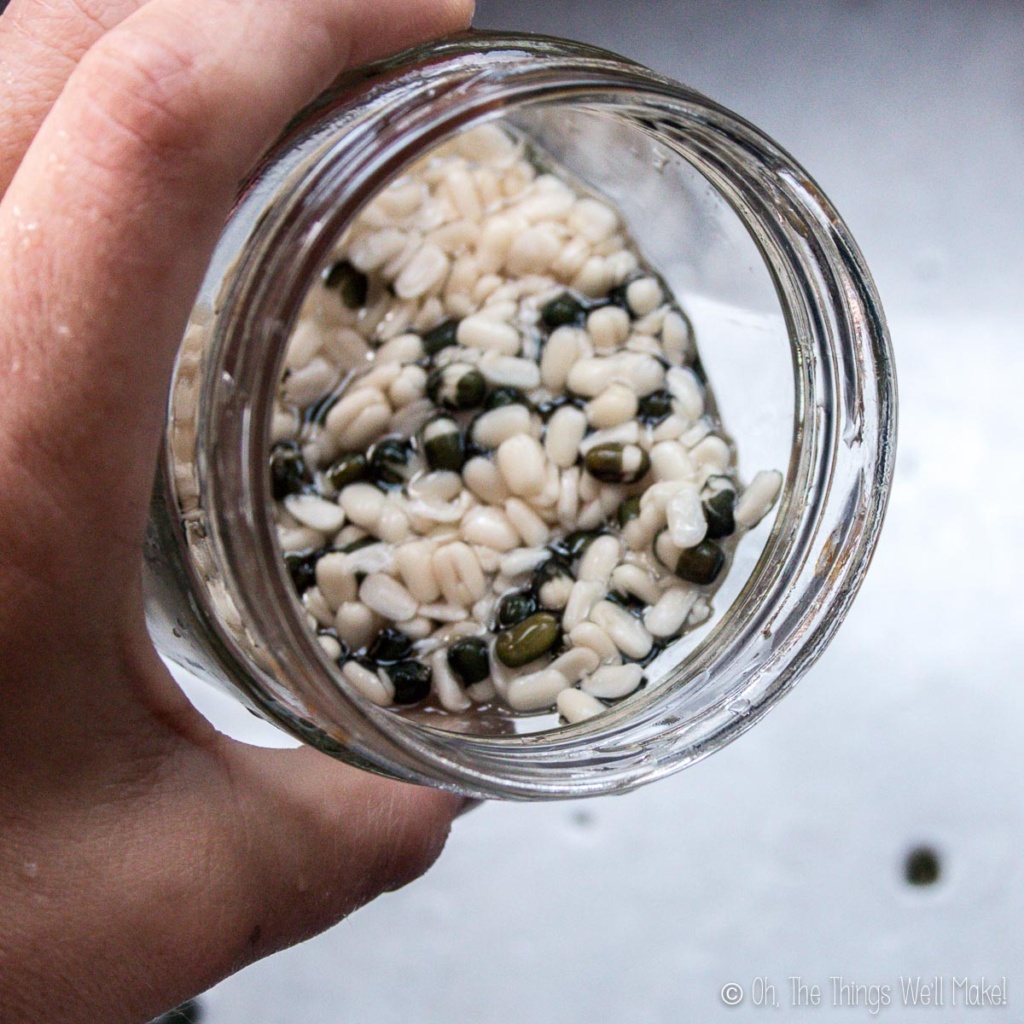
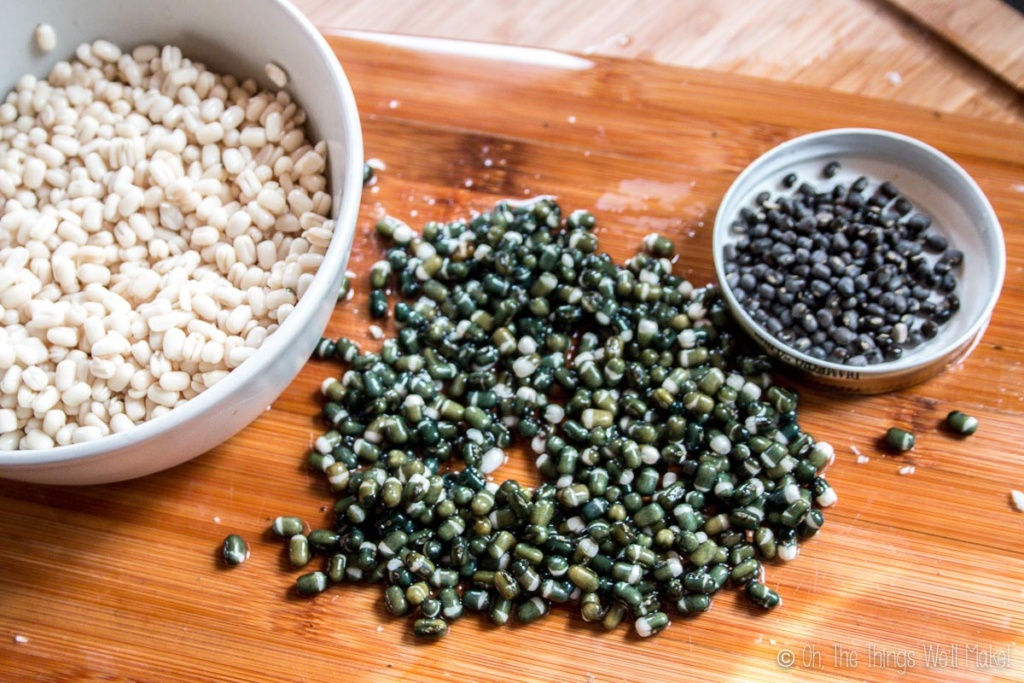
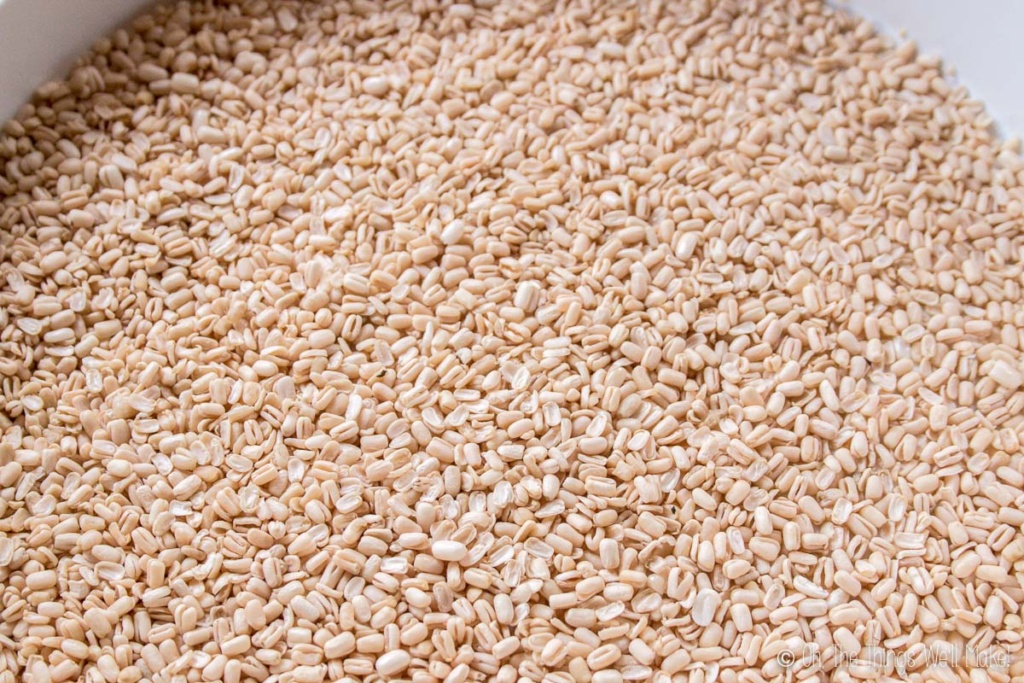
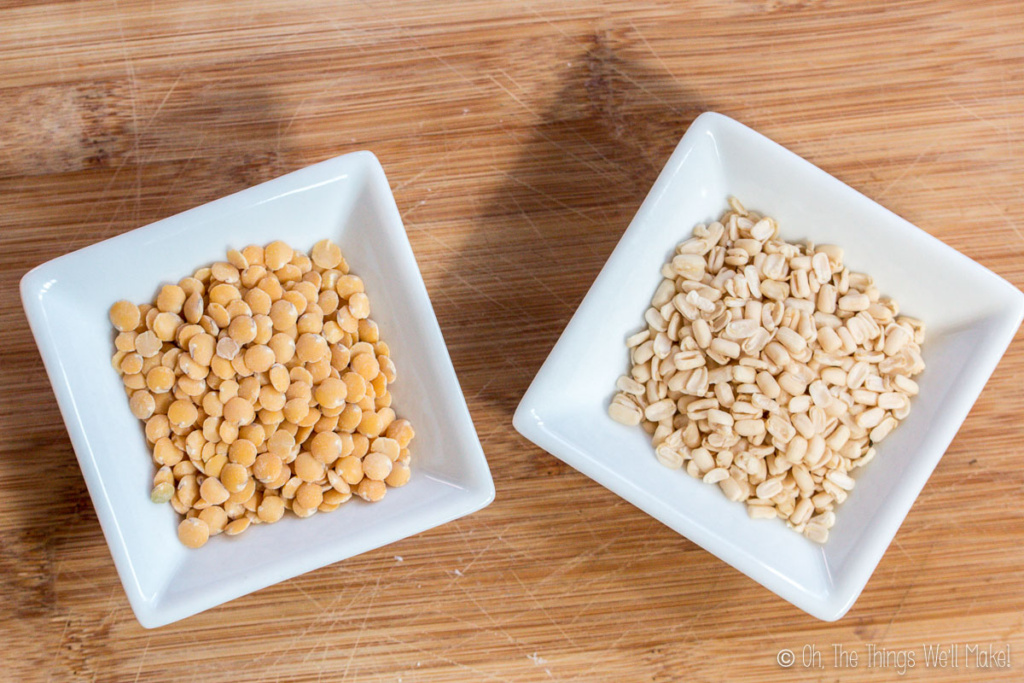
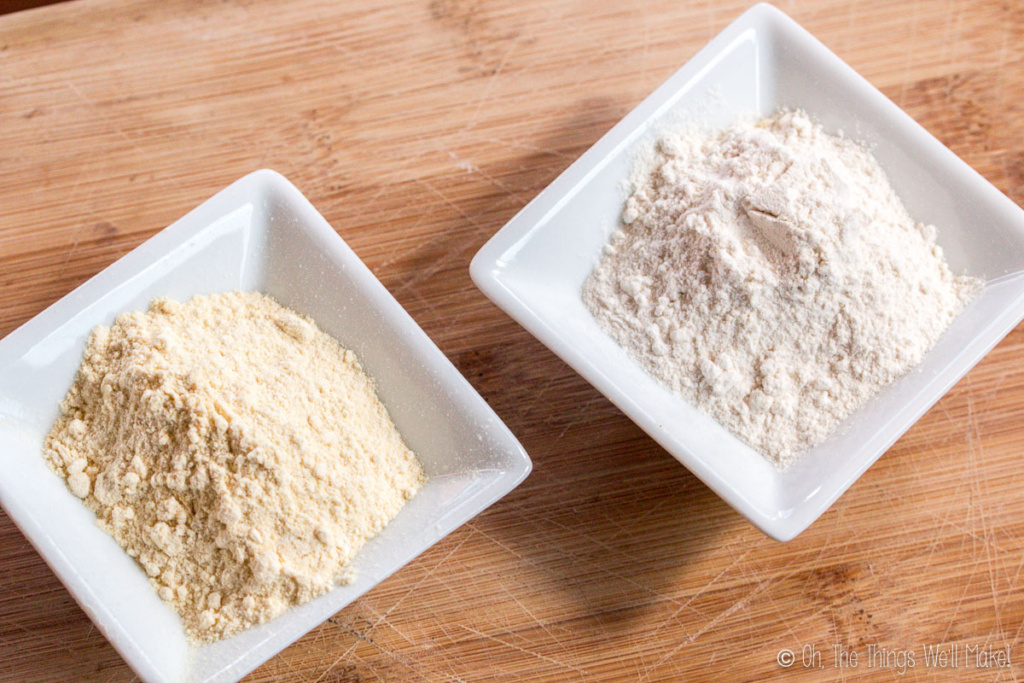
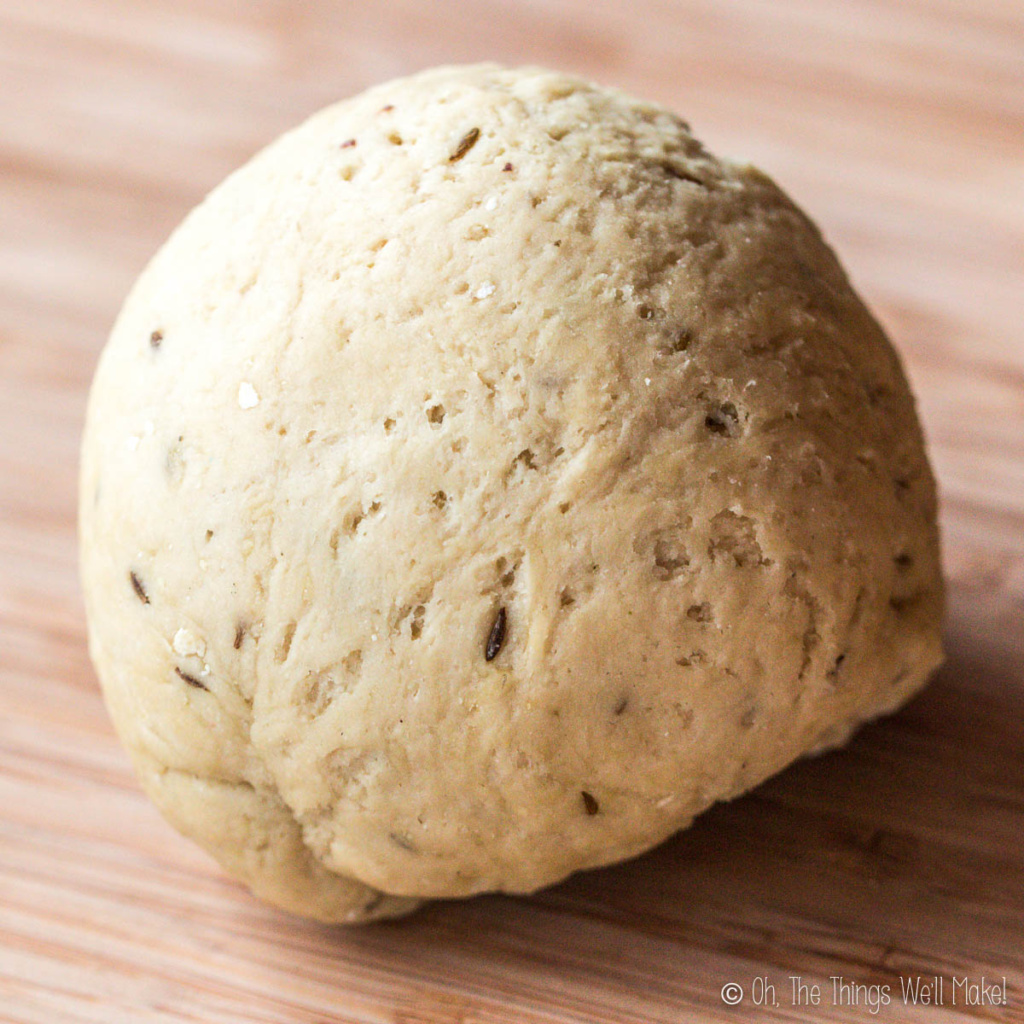
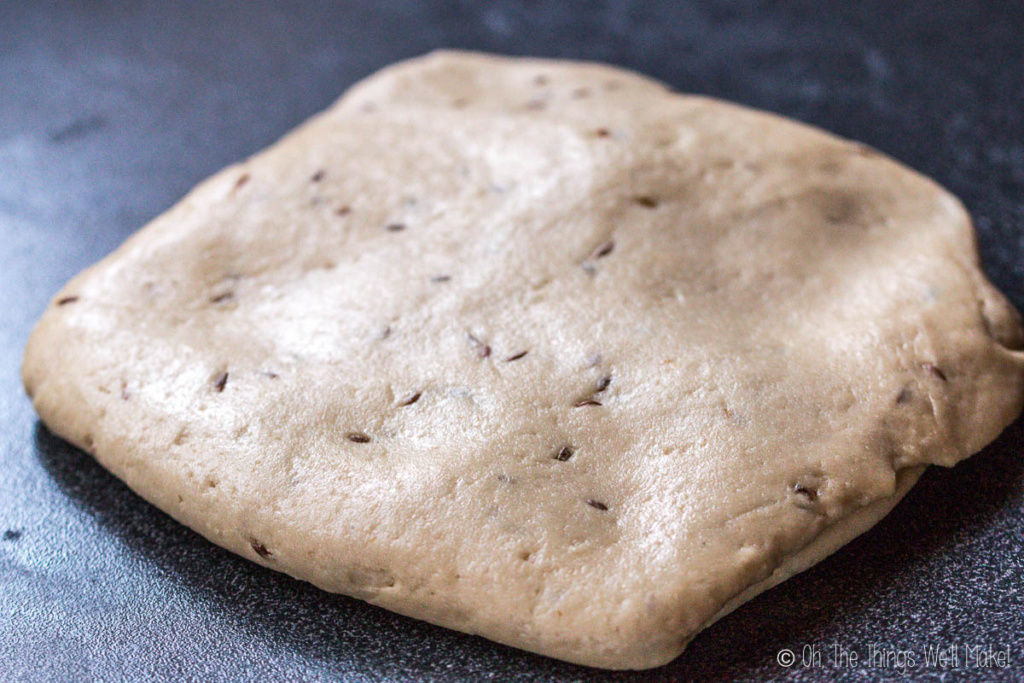
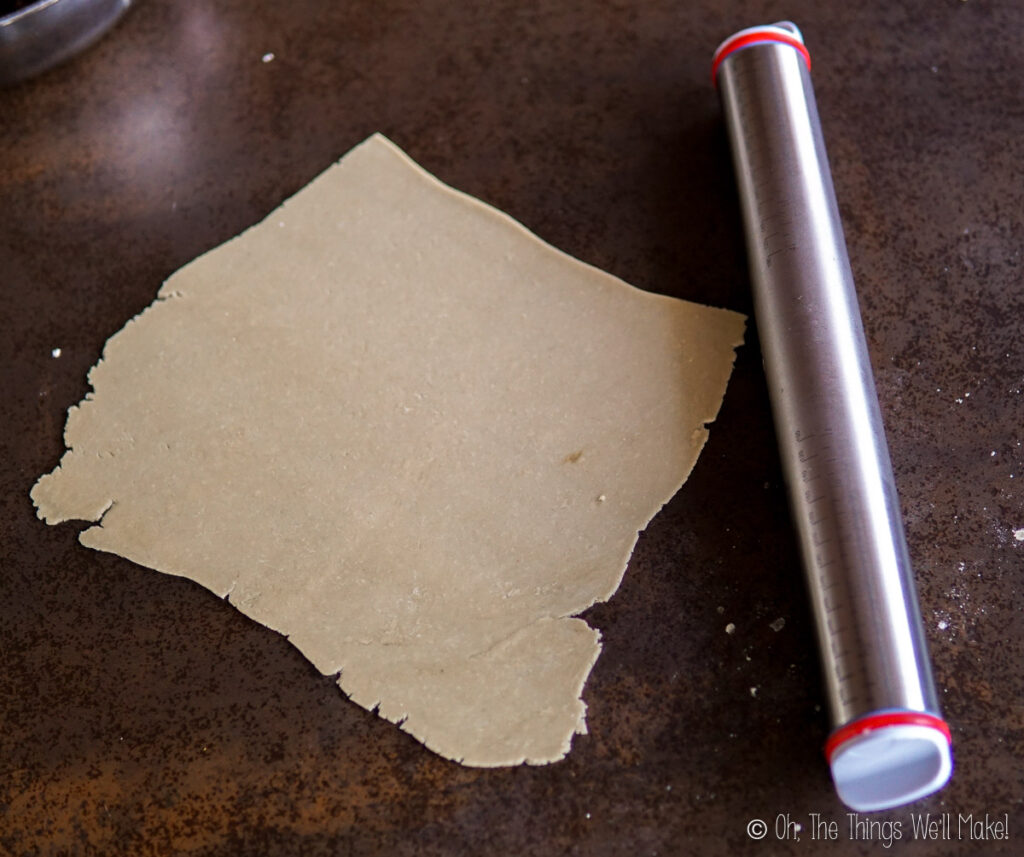
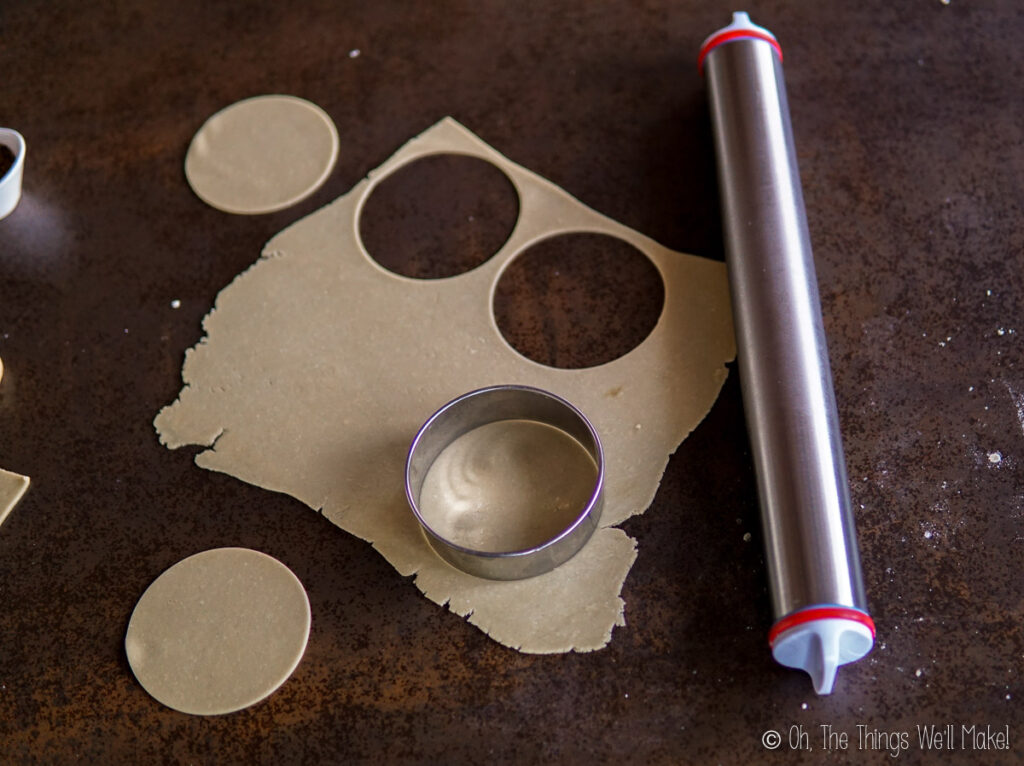
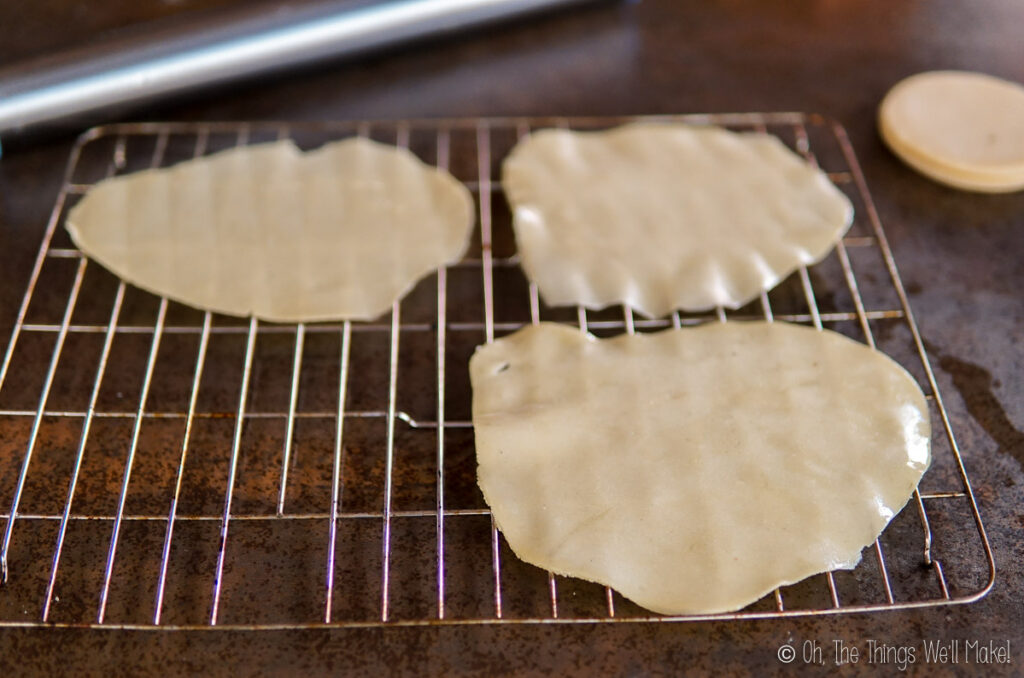
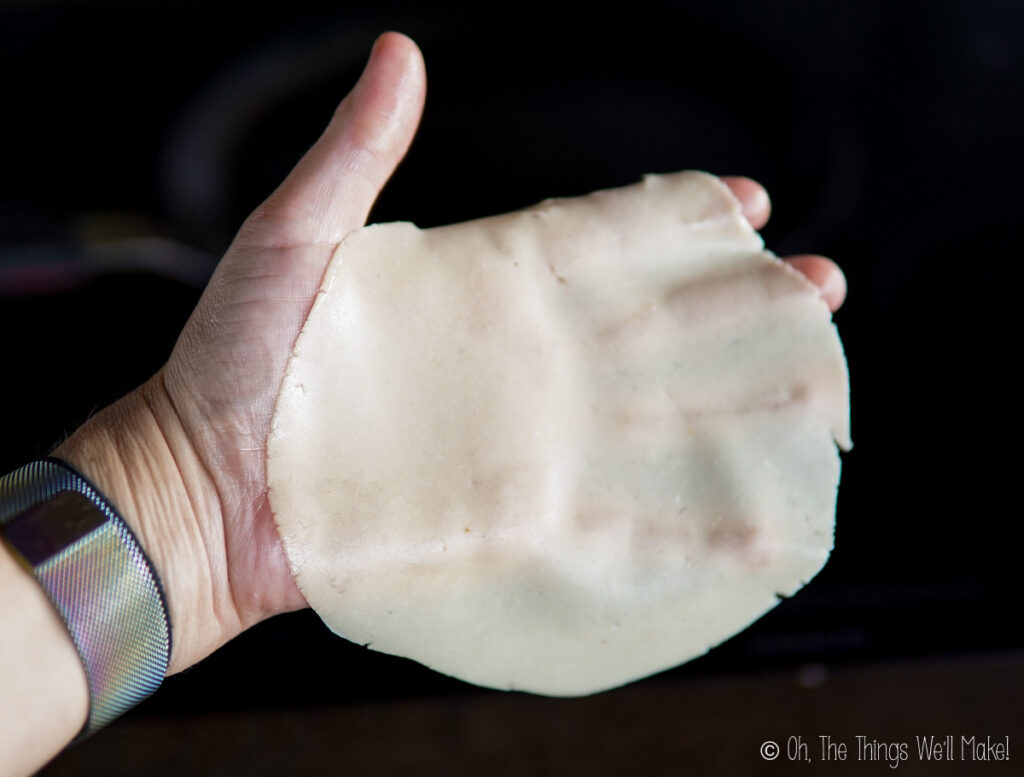
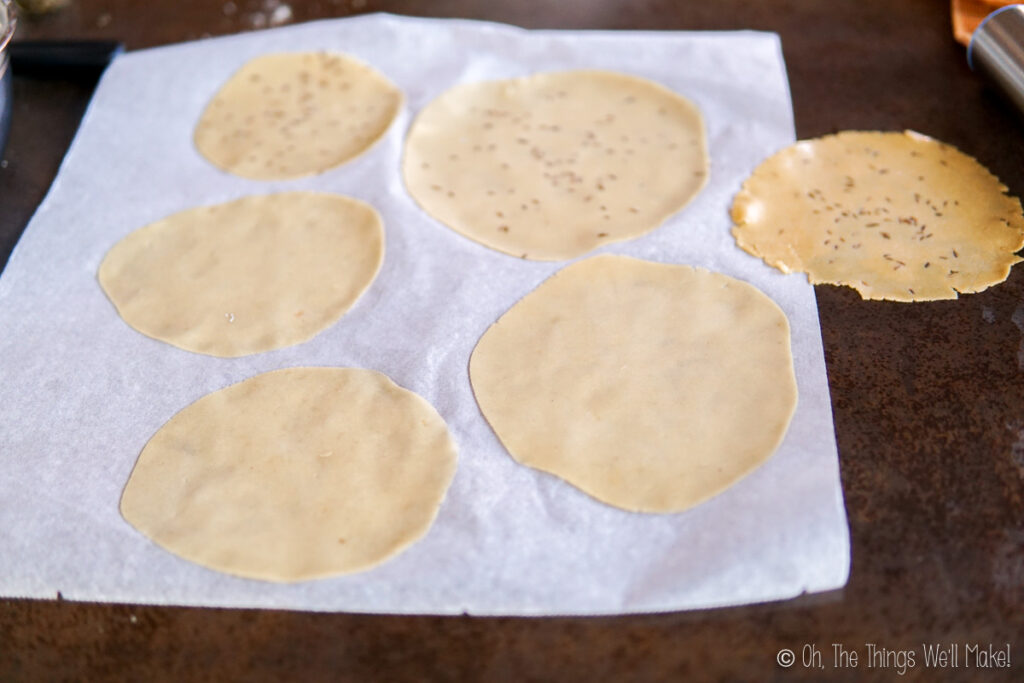
 DIY Easy Solid Perfume
DIY Easy Solid Perfume
David Rogers
I pan-fried mine, but I can’t seem to get that restaurant style crunch, so I was a little disappointed. If I make them again I’ll try deep frying. This was definitely the easiest recipe I could find, thanks for sharing it with us. Still tasted good.
Juju
Thanks for the great post, I found it when googling if you can cook them in coconut oil.
Tracy Ariza
Thanks, Juju.
And yes! You can definitely use coconut oil. ?
Carol
You can also microwave them for about a minute.
Sophie Monica
If I chose to microwave them, how long do you microwave them for? What wattage?
Do you have to cover it in the microwave?
Tracy Ariza, DDS
I usually microwave the store made ones for just over a minute, flipping them after 30 seconds pass and then continue for the rest of the minute. I have normally fried my homemade ones. Next time, I’ll try with one of my homemade ones. (The problem I see is that they aren’t as thin as the commercial ones, so they may take longer and may not cook as evenly in the microwave as the store-bought ones.)
Zo
I came across this site while searching for traditional Indian bread! Now I am a fan!!
I have to learn about all the different kinds of beans and how to use them.
Thanks for sharing.
Tracy Ariza
Thanks, Zo!
I’m happy to hear it! 🙂
I want to try with some of the others, too. I’d imagine you can make a papadum of sorts from all sorts of different legumes.
Michelle
Great job! Loved reading about this adventure. I live in a place that doesn’t have a lot of the same convenience items as my home country so I’ve learned to make all sorts of things from scratch. I read this recipe, went out to find the flour and unexpectedly found pappadums! So I won’t make them just yet but good to know this resource is available. Thanks again.
Tracy Ariza
Hi Michelle,
Thanks. If you do give them a try, I hope they go well for you! 🙂
Jason Kirk
I have a couple of good Indian markets near me and the variety of beans and lentils is surpassed only by whatvthey are called!
Urad beans are also called black gram.
Urad means black gram means bean.
So far as I can tell, Dal is a peeled bean or lentil.
So on my journey to get this fine ingredient, I ended up with a bag of Urad Dal (split matpe beans) from a company called Swad. It is peeled, split Urad beans. I see it on AmaOn but it really expensive compared to the market.
I have been making Dosas with them mostly but as soon as I work out some good chutneys I plan to make papadam.
Thank you for your blog it will definitely Ben helpful for me in the journey and hopefully you can find a matpe or urad flour source soon.
Tracy Ariza
Thanks so much for the info!
I hope it went well for you!
Gerald
Tracy,
Thank you for this recipe. I’ve been looking for one for a while now.
I did find split Urid beans recently and ground them up in my spice mill. They are drying out as I type;)
Very easy to make, the rolling (to get thin enough) is a bit of a b$¥ch though. (As you mentioned)
I might try them next time and use my pasta roller (LOL)
Contrary to the notes, I did find I had to add a little extra water to pull it all together ([Tbs] ish). It may take a bit longer to dry out ….we shall see.
Two of mine are at university and coming home in three weeks. They can’t wait to try (huge curry family)—-guessing I better put some muscles on the rolling arms.
Thanks again. Popadum and lime pickle chutney here I come!
Tracy Ariza
Hi Gerald,
I’ll have to try making these again. I have some split urid beans on hand now, and would like to make a video of the process for the blog. 🙂
I can’t remember how difficult it was anymore. I only remember the peeling part being horrible. Ha!
I’ll have to check on how much water I have to add this time around. Perhaps mine were more hydrated because of the peeling process. (Although I did need to dry them, so I’m not sure why it would differ.)
I hope they go well for you. I’m sure they’ll be delicious! Enjoy your family time. 🙂
Ivargas
What you are calling Urid looks like mung beans/mung dhal?
Tracy Ariza
Hello Ivargas,
No, they aren’t exactly the same, but you are right- they definitely look the same. I have both at home. I can try to get a picture later on today.
I was actually going to try to make papadums with the mung beans, but haven’t gotten around to it yet.
Shelley
Essentially the same thing. Urid lentils are also called urad dhal depending on the geographical location.
michelle
Hi, I tried to make this but it is not coming out the same way at all. I soaked the red lentils and grinded with vitamix. I used the ratio of flour to water but it barely mixed everything. It was still powdery and clumped little pieces, so I added more water. Then, I rolled it out so its about 1/16″ thick and put it in the oven. What came out was this hard chunk, no bubbling or crispiness. Am I doing something wrong?
Tracy Ariza
Hi Michelle,
I never tried any of mine in the oven. That is probably your problem.
In the oven, you are making more of a cracker.
To get them to bubble and get crispy, you either need to deep fry them in oil or microwave them. I’m not sure why microwaving works to puff up papadums and also things like prawn crackers, but for some reason it does.
All of that said, I never got to experimenting with red lentils, so they may behave differently than the lentils I used too.
Sophie
Hi! I shop buy my papadams (because I only just discovered this amazing recipe this evening) but I find if I dip the papadams into a bowl of water and put them in a really hot oven , say 250° they bubble up nicely. Not having a microwave and an aversion to deep frying means I really had to experiment there. But my husband does love a papadam so it was totally worth it
Tracy Ariza
Hi Sophie,
Thank you for the awesome tip!
I’ll have to try that next time! 🙂
Susan
That is a lovely endeavour. Welldone for your determination and sharing with us! I would have given up at the urid peeling stage.
Su
Tracy Ariza
Hahahaha, Susan,
Don’t think I didn’t consider it at some point in the peeling stage. 😉
Luckily I’m a bit stubborn (and curious).
Maria
Hello 🙂 do u know if i can use any other flour maybe wholegrain? I would really like to try them but i can’t find these urid flour :s
Tracy Ariza
Hi Maria,
You can try to make something similar with another type of flour, just like I made some similar crackers with “regular” lentils, but they will really be just that, a different type of cracker and won’t be papadums. The lentils made a nice cracker, but they tasted a lot different from the papadums and the texture and everything was different.
I’m sure you could still make something interesting that tastes nice. You could also try grinding up a legume that you do have nearby and giving that a try. I’ve been meaning to try with chickpea flour but never got around to actually making them yet.